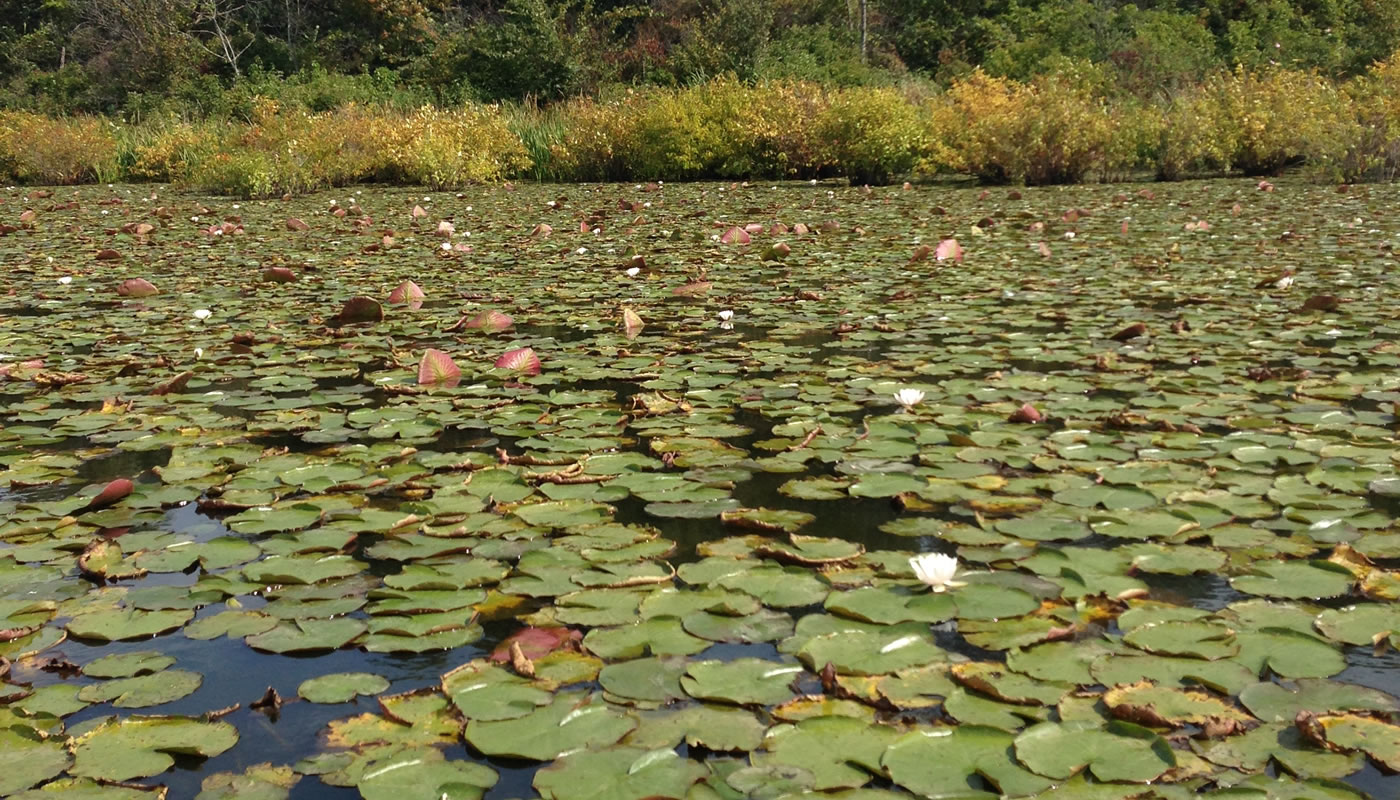Summertime often brings visions of leisurely boating on lakes and fishing from a shady shoreline. It also noticeably brings new growth of aquatic vegetation. While it’s easy to think this vegetation is a nuisance, it also serves an important role in the ecosystem. To help manage the amount of vegetation growing on water bodies, the Forest Preserves’ Fisheries staff has been conducting an aquatic vegetation management program on Forest Preserves water bodies since the 1960s.
“Data suggests that a water body should have about 15%-20% of natural vegetation cover to promote a healthy ecosystem,” explains Fisheries Biologist Steve Silic. “However, with the introduction of such aquatic invaders as Eurasian Watermilfoil (Myriophyllum spicatum) and Curlyleaf Pondweed (Potamogeton crispus), the man-made Forest Preserves lakes can quickly become overtaken by aquatic vegetation, causing the lake to become unhealthy for the aquatic wildlife, become very difficult to fish, as well as aesthetically unpleasing.”
One of the main benefits of having vegetation in water bodies is to create habitat, which provides food, breeding grounds, hiding places and hunting grounds for fish and other aquatic wildlife such as including insects and amphibians. Aquatic plants also add dissolved oxygen to the water column.
To control instances of too much vegetation, Fisheries Biology staff dispense federal- and state-approved aquatic herbicides into certain lakes to reduce the amount of aquatic macrophytes, or plants and algae, growing in the lakes. The biologists must test for, and acquire multiple Illinois Department of Agriculture (IDA) licenses allowing for the purchase and dispensing of the herbicides, including an operator’s license, as well as an aquatic applicator’s license specific for the lake work.
Following a job, the site is always clearly marked with signage depicting the herbicide used, date of treatment, and any restriction that must be followed.
“Our aquatic vegetation management program helps control the spread of exotic and invasive plant and algae species from overtaking the lakes,” says Silic. “By having the fisheries staff treat the lakes, it allows for a more manageable amount of vegetation to inhabit the lakes, while also allowing for easier shoreline fishing as well as boating.”
This program has proven to be very successful over the years, and helps keep Forest Preserves lakes healthy and clean.
To plan your next outing on Forest Preserves lakes, visit the Boating Page.

